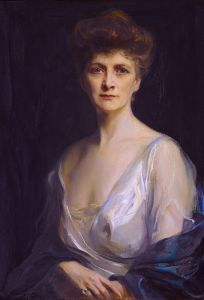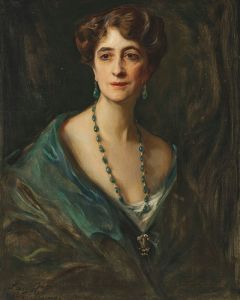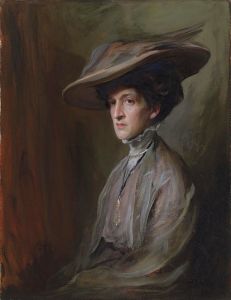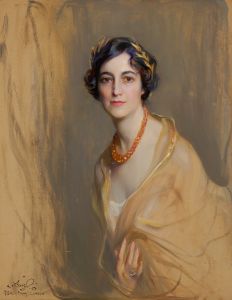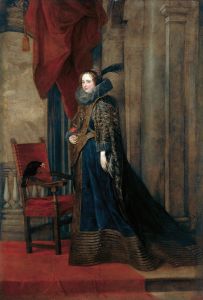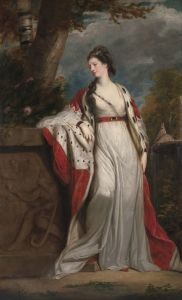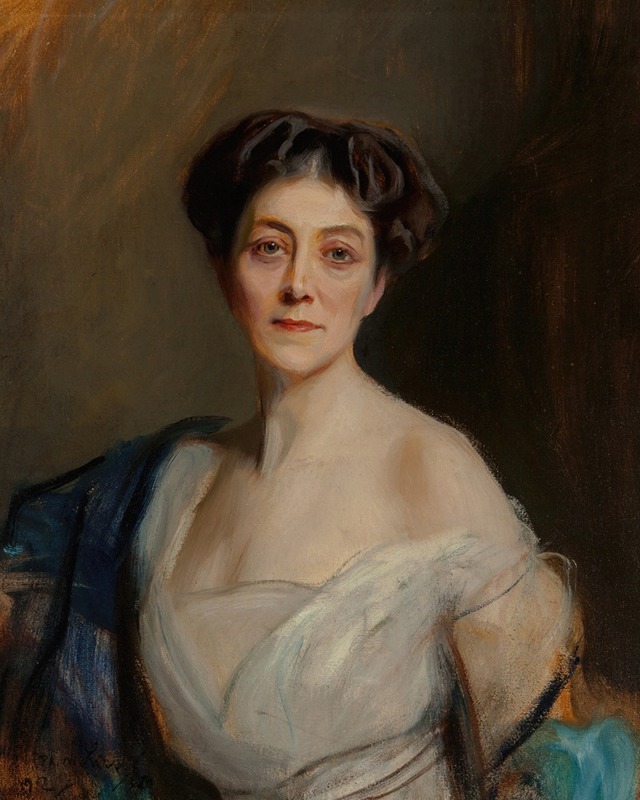
A portrait of Caroline Lambart, Countess of Cavan
A hand-painted replica of Philip Alexius de László’s masterpiece A portrait of Caroline Lambart, Countess of Cavan, meticulously crafted by professional artists to capture the true essence of the original. Each piece is created with museum-quality canvas and rare mineral pigments, carefully painted by experienced artists with delicate brushstrokes and rich, layered colors to perfectly recreate the texture of the original artwork. Unlike machine-printed reproductions, this hand-painted version brings the painting to life, infused with the artist’s emotions and skill in every stroke. Whether for personal collection or home decoration, it instantly elevates the artistic atmosphere of any space.
Philip Alexius de László was a renowned Anglo-Hungarian painter known for his portraits of royal and aristocratic figures in the late 19th and early 20th centuries. One of his notable works is the portrait of Caroline Lambart, Countess of Cavan. This painting exemplifies de László's skill in capturing the elegance and poise of his subjects, a hallmark of his artistic style.
Caroline Lambart, Countess of Cavan, was a member of the British aristocracy. She was married to Frederick Lambart, the 10th Earl of Cavan, a title that placed her within the upper echelons of society. The Countess was known for her social standing and involvement in various aristocratic circles, which made her a fitting subject for de László's portraiture.
De László's portrait of the Countess of Cavan is characterized by its attention to detail and the artist's ability to convey the personality and status of his subject. The painting likely features the Countess in formal attire, reflecting her noble status and the fashion of the time. De László was adept at using light and shadow to create depth and realism in his portraits, and this work would be no exception. His technique often involved a delicate balance of color and texture, which brought a lifelike quality to his paintings.
The portrait of Caroline Lambart would have been created during a period when de László was at the height of his career, having already established himself as a sought-after portrait artist among European nobility. His ability to capture the essence of his subjects made him a favorite among the aristocracy, and his works were highly regarded for their elegance and sophistication.
De László's portraits are often noted for their psychological depth, as he had a unique talent for portraying the inner character of his sitters. This skill would have been particularly important in a portrait of someone like the Countess of Cavan, whose social position required a depiction that conveyed both her personal dignity and her public role.
The painting of Caroline Lambart, Countess of Cavan, would have been part of de László's extensive body of work, which includes portraits of many prominent figures of his time. His works are housed in numerous public and private collections around the world, and they continue to be celebrated for their artistic merit and historical significance.
In summary, the portrait of Caroline Lambart, Countess of Cavan by Philip Alexius de László is a testament to the artist's exceptional skill in portraiture. It reflects both the personal grace of the Countess and the broader social context of the British aristocracy during the period in which it was painted. De László's ability to capture the essence of his subjects ensures that his portraits remain enduring works of art.





